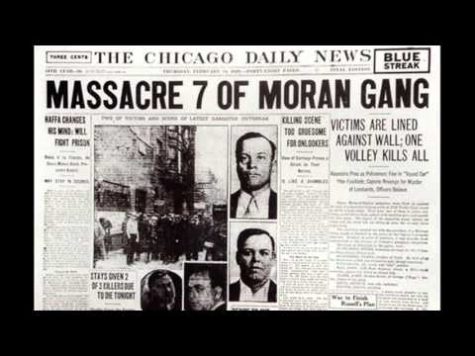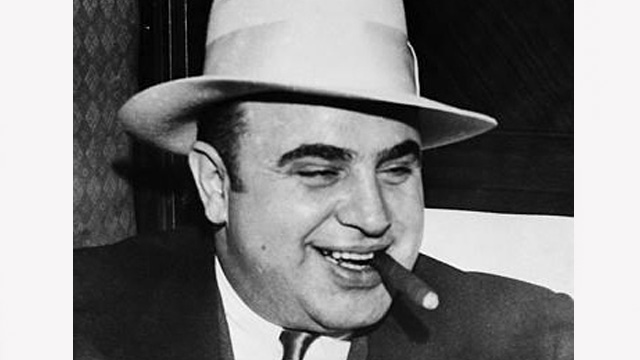Al Capone and The Valentine’s Day Massacre
February 9, 2023
Alphonse “Al” Capone was born in New York on January 17, 1899. His family immigrated to the U.S. from Naples, Italy in 1893. With the famous nickname “Scarface,” he became the most legendary Prohibition-era gangster. Al Capone dominated organized crime in Chicago from 1925-1931.
Capone’s delinquent behavior started at age 14 when he hit his school teacher and was expelled from the 6th grade. The severity of his crimes continued to escalate, including multiple murders, when at age 21 he became a member of the Five Point Gang. Around that same time, another gangster sliced Capone’s face with a knife after Capone insulted the man’s sister. “Scarface” became his well-known nickname.
Capone became the crime czar of Chicago as he was involved in running gambling, bootlegging, and prostitution rackets. By 1927, Al Capone’s estimated worth was 100 million.
Capone was arrested for several crimes, including murder associated with gunning down rivals and rival gang members. Through intimidation and threats of violence, eyewitnesses lost their nerve to testify against him and he was never indicted for those crimes. Sadly his competitors didn’t know who was coming for them. Al Capone was ruthless and hellbent to have control over the illegal alcohol trafficking industry at all costs. On February 14, 1929, Al Capone and his associates disguised as policemen raided the garage of George “Bugs” Moran’s gang. Seven members of the Bugs gang were lined up against a wall and shot in cold blood. The Saint Valentine’s Day Massacre came to be known as a symbol of violence in the Prohibition era. The seven gang members killed were: Albert Weinshank, Adam Heyer, Pete Gusenberg James Clark, Frank Gusenburg, John May, and Dr. Reinhart H. Schwimmer.
After his well-known involvement in the famous Valentine’s Day Massacre, Al Capone was ironically arrested and convicted only of possession of a concealed weapon, then sentenced to 10 months in Pennsylvania’s Holmesburg Prison. Capone’s life of crime came to an end when he was charged with and convicted of over 20 counts of tax evasion and conspiracy to violate Prohibition laws. He served 10 years in prison, with some of those years spent at California’s famous Alcatraz prison. Al Capone died in his home in 1947 from cardiac arrest and was ironically considered to be a powerless recluse.







Jaden Dorsey • Sep 13, 2024 at 2:51 pm
This article did a good job on his background and what he came from, and I didn’t know how he had gotten caught until reading this.